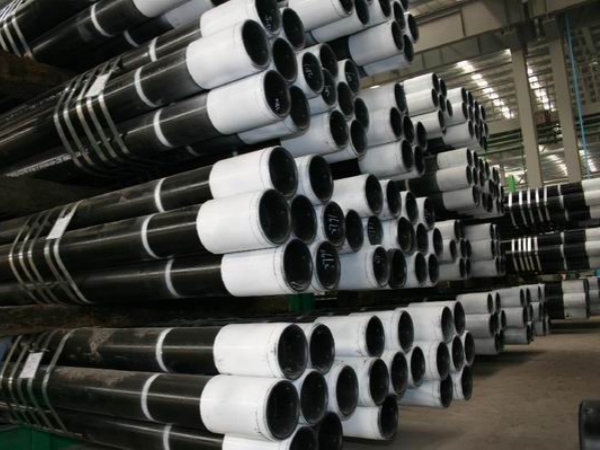The production process for J55 oil casing involves several steps to manufacture high-quality steel casing suitable for use in oil and gas wells. J55 is a common grade of casing steel, and its production process generally includes the following key stages.

Raw Material Selection:
The process begins with the selection of high-quality raw materials, typically steel coils or plates. These materials should meet the chemical composition and mechanical property requirements specified for J55 grade casing.
Cutting and Forming:
The selected steel coils or plates are cut into the desired lengths to form the casing tubes.
The cut pieces are then shaped into the cylindrical form of the casing through a process such as rolling or forming.
Welding:
For electric resistance welded (ERW) casing, the formed tubes are welded using high-frequency electrical currents. This welding process fuses the edges of the steel to create a continuous casing tube.
The welding process is carefully controlled to ensure proper penetration and quality welds.
Heat Treatment:
The casing undergoes a heat treatment process to achieve the desired mechanical properties, including hardness and toughness.
The heat treatment process typically involves quenching and tempering to enhance the steel's strength and resistance to deformation.
Threading:
The ends of the casing tubes are threaded to allow for proper connection during well assembly.
Threading may be performed using various methods, including mechanical threading or cutting threads using specialized equipment.
Inspection and Testing:
Each casing tube undergoes a series of inspections and tests to ensure compliance with industry standards and specifications.
Non-destructive testing (NDT), such as ultrasonic testing (UT) and magnetic particle testing (MPT), is often conducted to detect internal and surface defects.
Dimensional inspections and visual examinations are performed to verify the casing's overall quality.
Marking and Identification:
The casing is marked with essential information, including the grade (J55), size, heat number, and other identification marks.
Proper marking ensures traceability and facilitates the identification of the casing's specifications.
Coating (Optional):
In some cases, an optional coating may be applied to the casing to enhance corrosion resistance. Common coatings include epoxy, paint, or other anti-corrosion materials.
Final Inspection and Documentation:
A final inspection is conducted to ensure that the casing meets all specified requirements.
Comprehensive documentation, including inspection reports, material certificates, and heat treatment records, is compiled for quality assurance and traceability.
Packaging and Shipping:
The finished J55 oil casing is properly packaged to protect it during transportation and storage.
It is then shipped to the end-user or distribution points for use in oil and gas well construction.
Throughout the production process, adherence to industry standards, quality control measures, and careful monitoring of each step contribute to the production of reliable and durable J55 oil casing.